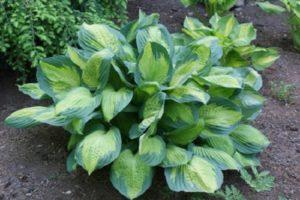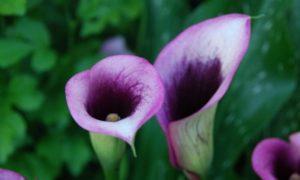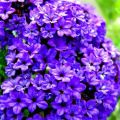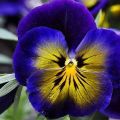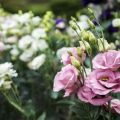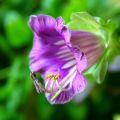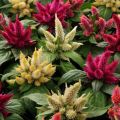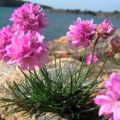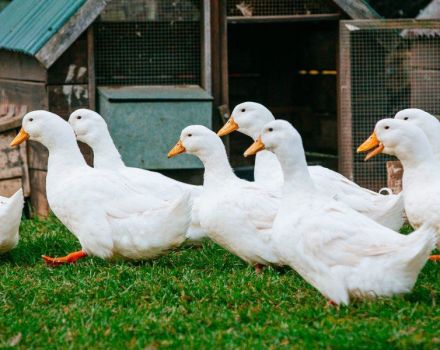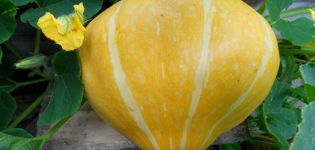Planting and caring for a brachycoma in the open field, growing from seeds
Every gardener wants to plant unpretentious and flowering plants on his site. A garden flower such as a brachicoma will ideally complement any landscape design, planting and proper care of which practically does not cause difficulties, it is only important to follow the simple rules of agricultural technology. The plant has recently begun to gain popularity due to its characteristic features.
Brachikoma - what is this flower: characteristic features
The homeland of the beautiful brachicoma is Australia, where it grows as a perennial plant. In our regions, the flower is grown as an annual, because it does not tolerate winter frosts. In a warm climate, you can cultivate brachycoma as a perennial, but for this you need to properly prepare the bushes for winter.
Brachikoma is a low-growing plant of the Astrov family, the height of which reaches 25-30 cm. The stem is thin, branched, eventually forming into a lush bush. It is decorated with pinnately carved leaves. The flowers are similar in appearance to chamomile and have a variety of colors, which depend on the variety.
They are collected in inflorescences-baskets, there are simple, semi-double and double. About 100 baskets can be observed on one bush. The scent of flowers is characterized by tenderness and refinement. Flowering occurs in July and lasts until September. Seeds ripen in autumn, their germination capacity is about 2-3 years.
Growing conditions
To admire the beautiful flowers of brachicoma in your garden, you need to create for them the basic conditions necessary for their normal growth and development, which include light, air, heat, water and nutrients in the soil.

Lighting
Brachikoma refers to light-loving plants, so it is better to plant a flower so that it is under the sun most of the time, and is also protected from the wind as much as possible. The ideal solution would be to assign the plant to the southern part of the garden plot.
Priming
The culture grows well on light sandy and fertile soils. Does not tolerate excess moisture, as stagnant water provokes root rot. Therefore, when planting, care must be taken to ensure that the soil is well drained.
Temperature regime
The temperature regime for this garden flower is of great importance.Brachikoma does not like the cold, but it does not tolerate heat either. Therefore, the most optimal range will be + 18 ... + 20 degrees.
Growing a brachicoma from seeds
According to gardeners, breeding a brachicoma from seeds is a simple and very exciting process. It is important to study the features of the plant and the technology of its cultivation, and then even a novice florist can cope with the task.
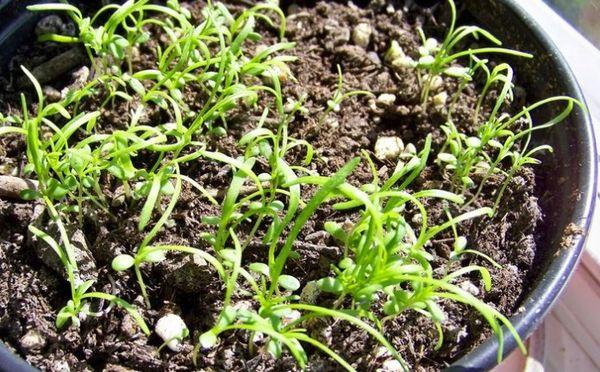
Sowing terms and technology
You need to start growing seedlings in late February or early March. To do this, the following procedure must be followed:
- Prepare a soil mixture of sand, leafy earth, turf and humus (1: 1: 3: 2) with the addition of minerals.
- Take a small container and fill them with prepared soil, slightly moistening it.
- Form grooves on the soil surface, and after spreading seeds in them, do not sprinkle with soil and do not deepen.
- Cover the seedlings with foil or glass.
Place containers in a room with a temperature of 18-20 degrees above zero. For the speedy germination of seeds, you need to regularly ventilate the room and spray the seedlings using a spray bottle. When the first shoots appear, the cover must be removed.
Picking
As soon as the seedlings have 2-3 full leaves, you need to pick. This garden flower tolerates the procedure perfectly and is practically loss-free. To do this, plant the plants in separate containers, maintaining a distance of 5 cm between them. Care after the pick includes timely watering and rare feeding.
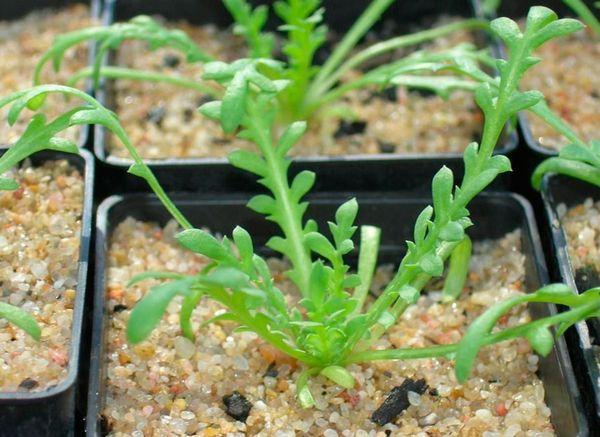
As soon as the weather is warm, the grown plants need to be tempered by daily taking the container with the seedlings to the street, gradually increasing the time. In the last days of May, when there is no risk of recurrent frosts, plant the seedlings on a flower bed, observing the distance between planting units of 20 cm. Beforehand, dig up the planting site to a depth of 20-25 cm and carefully align.
Brachikoma, 3 months after the germination of the seeds, will begin to delight with its flowering, almost immediately after planting in open soil, it will decorate the site with graceful flowers.
Plant care in the open field
Brachikoma belongs to unpretentious plants, so caring for it is minimized. Such standard techniques as high-quality watering, timely feeding, forming a bush, as well as combating dangerous pests and major diseases, will allow you to decorate the local area with amazing flowers.
Watering
Regular, moderate watering is carried out. It is important not to overdo it, as excessive moisture leads to the death of the plant. Also, do not forget that severe drying out of the soil can greatly harm the garden flower.
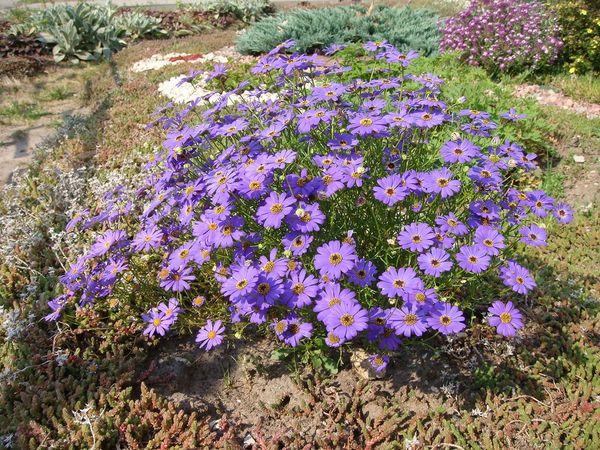
Water the bushes more often during the dry season and at the time of their active growth. After each irrigation, it is imperative to loosen the soil so that the root system receives oxygen. In rainy weather, it is recommended to sprinkle pine needles or ash around the bushes, then the snails will bypass the brachycomas.
How to feed
During the summer, during the growing season, the plant needs to be fertilized only 3 times, using a universal fertilizing of a low concentration, after which the bushes should be sprinkled with ash. It is not recommended to feed the brachicoma with organic fertilizers, as nitrogen makes the flowering scarce.
Bush formation
To form a lush brachicoma bush and stimulate abundant flowering, you need to pinch the top of the plant. And the timely removal of faded inflorescences will prolong the flowering process.
Preparing for winter
When growing brachycomas in areas with warm winters, there is a chance to save the plants for the next season. To do this, insulate the bushes using straw or spruce branches.
Diseases and pests
Brachikoma demonstrates unpretentiousness, endurance and is rarely affected by diseases and pests.When growing a crop, a gardener can face such problems.
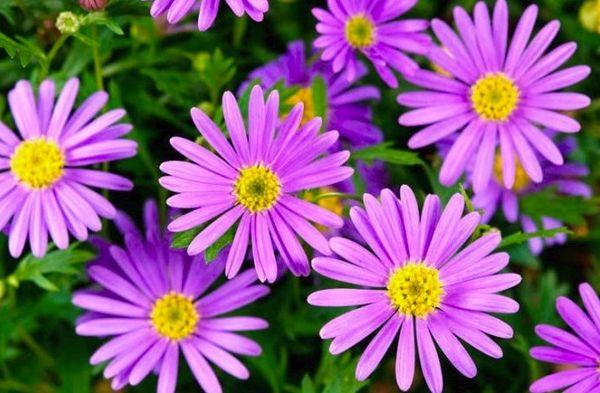
Decay of the root system or stem
Over-watering and rainy weather can cause stem and root rot. To save the plant, you need to transplant it to another place and provide high-quality drainage, having previously rid it of rotten parts.
Snails
A brachycoma can be attacked by snails, which gnaw holes of various sizes in the leaves. Effective control of them consists in the manual collection of pests and their subsequent destruction.
Also, treat the bushes with specially designed agents that scare away gastropods, while it is important to take into account that chemicals can harm the culture.
Whiteflies
This garden flower is pestered by such a pest as the whitefly. The danger comes from the larvae of this flying insect, which feed on the sap of the plant, leading it to death. To repel their attack, you need to use suitable chemical agents sold in retail chains.
The best varieties
There are more than 50 varieties of culture, but of particular interest among gardeners when creating landscape design is the brachycoma Iberisolum, on the basis of which various varieties of plants have been bred.
Iberisolistnaya (Brachycome iberidifolia)
This species is presented as a small branching bush, reaching up to 40 cm in height. The plant is decorated with thin, delicate foliage. Flowers of different varieties attract attention, the colors of which can be white, blue, violet, purple, pink. The tubular flowers have a pronounced blue color. Flowering occurs in July and lasts until mid-autumn.
Multifid (Brachycome multifida)
A compact perennial up to 45 cm high. The foliage is green, deeply cut, feathery, 3-6 cm long. The flowers, painted in lilac, pink or white, with numerous thin and narrow petals, fascinate the eye. A distinctive feature of the species is the active rooting of plants when the stems come into contact with the soil. Forms a small number of seeds that have a low germination rate.
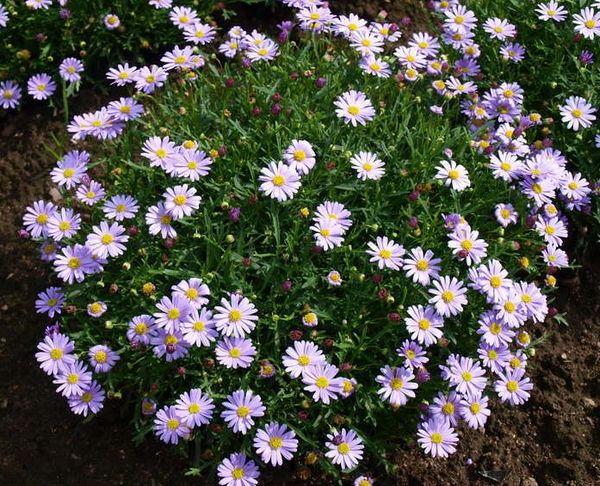
Mega blue
A graceful perennial flower with unique purple and bright blue with a dark center and white edging, basket-shaped inflorescences, which are placed at the ends of the shoots, one or several pieces. Thin stems are covered with foliage that has a solid surface. Pleases with luxurious flowering in the middle of summer.
Blue
A compact bush, strewn with light blue inflorescences with a yellowish center 1.5-2 cm in diameter, which stand out against the green background of delicate foliage. The leaves are whole or pinnately-separated, in the next order. It begins to bloom in mid-July.
Swan Lake
A beautiful, graceful plant up to 25 cm high. The bush is highly branched, covered with delicate, pinnately dissected foliage and dotted with numerous flowers, collected in inflorescences-baskets 3 cm in diameter. The flowers are ligulate, with a varied palette of shades. Abundant flowering begins in June and continues until the onset of autumn frosts.
For every gardener, brachycoma will be just a real find. This unpretentious plant will delight you with luxurious flowering all season. A varied palette of inflorescence shades is a great opportunity for a flight of fantasies when creating unique living compositions.
